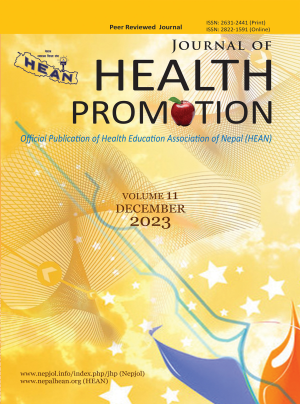Technology Utilization and Physical Engagement Among Children with Disabilities in Nepal
DOI:
https://doi.org/10.3126/jhp.v11i1.61207Keywords:
Digitization, disability, impairment, physical education, special needs, technologyAbstract
This study aims to explore how the utilization of modern technology by children with disabilities may lead to sedentary behaviors. This study is informed by the interpretive paradigm. An explorative qualitative research design was adopted to approach the phenomenon. This study has covered three different disability groups: visual impairment, hearing impairment, and physical disability. In order to cover these groups, three integrated schools were purposively selected for the study. Altogether, 22 participants—head teachers, teachers, students, parents, and members of Disabled People Organization— were purposively selected. In-depth interview guidelines and key informant interview guidelines were used as data collection tools. The obtained data were analyzed and interpreted thematically by using multiple facts and critical views. Children with disabilities were found to be interested in participating in various kinds of physical activities. Children are increasingly attracted to the newest forms of technology. With the exponential development of smartphones and tablets, the use of technology devices has become unavoidable and is now viewed as an integral part of life. Digital technology was found to be one of the main causes of physical inactivity among children with disabilities. The entire group of stakeholders is advised to increase outdoor activities to promote physical fitness and health of children with disabilities.
Downloads
Downloads
Published
How to Cite
Issue
Section
License
Copyright (c) 2023 Health Education Network (HEAN)

This work is licensed under a Creative Commons Attribution-NonCommercial 4.0 International License.
© Health Education Association of Nepal (HEAN)
Authors are required to transfer their copyright to the Health Education Association of Nepal (HEAN).
The materials of this publication may be reproduced, reviewed and translated, acknowledging the source "Journal of Health Promotion".




